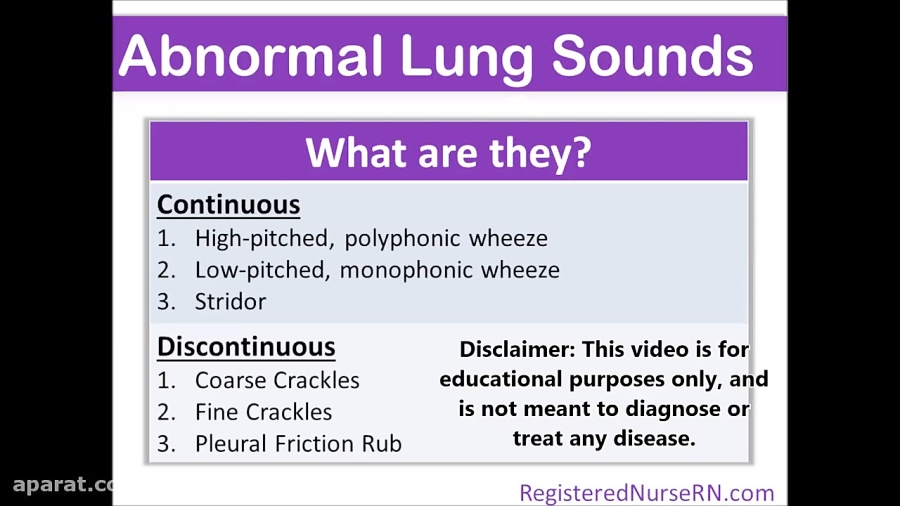
- DO YOU CONTINUE NEBULIZER USE FOR RHONCHI LUNG SOUNDS FOR FREE
- DO YOU CONTINUE NEBULIZER USE FOR RHONCHI LUNG SOUNDS SOFTWARE
The patient instructions provide a detailed script, allowing the person playing the patient to convey a realistic clinical presentation, including example phrases and advice on what information they should hold back unless directly asked. Please take a history, suggest appropriate systems to examine and further investigations to perform.”). His presenting complaint is severe back pain. “A 41-year-old man has presented for assessment. The student instructions provide an outline of what skill the person playing the student role will be expected to demonstrate in the station (e.g. The key to OSCE preparation is practice and our OSCE stations make that easy by providing everything you need including student, patient and examiner instructions. We’ve produced a brief video showing you how you can create your own OSCE stations and then organise them into circuits to share with others. student, examiner, patient) for each station easily using a PIN. You can then use our ‘Group Study Mode’ to assign roles (e.g. Simply create a circuit by tapping the ‘Add to circuit’ button on the stations you want to include in the mock OSCE circuit and then share this with those who want to participate.
DO YOU CONTINUE NEBULIZER USE FOR RHONCHI LUNG SOUNDS SOFTWARE
You can use our software to build and run a mock OSCE easily by choosing from our selection of high-quality mock stations and any you’ve created yourself using our intuitive OSCE Creator Tool.
DO YOU CONTINUE NEBULIZER USE FOR RHONCHI LUNG SOUNDS FOR FREE
Try our free trial collection of simulated patients, and let us know how you do!Įasily create a mock OSCE circuit for FREE You can choose to interact by typing or speaking, with support for multiple languages including French, Spanish, German and Portuguese. You can chat with our virtual patients anytime, letting you practice OSCEs on the go. Our advanced AI technology lets you chat naturally with our range of simulated patients to practice your history taking and clinical reasoning skills. New: AI virtual patientsĮnhance your OSCE practice with ourcollection of AI-powered simulated patients, available as part of our OSCE Stations subscription. We also provide free sample OSCE stations for all of the station types. OSCE cases) is ideal for students at all stages of training, including those wanting to practice OSCE stations for medical finals.

OSCE practice made easy with our OSCE cases Listen to rales here on the Medzcool YouTube channel.Interested in purchasing an institutional licence to provide access for all of your students? If so, email and we’ll provide further details. Rales are usually broken up into more specific types, based on the way they sound. When these tiny sacs are damaged or weighed down with fluid or mucus, they can make a crackling sound as they attempt to fill with air. These are tiny sacs of air and inflate and deflate with each breath. This usually occurs in the smaller parts of the lungs, like the alveoli. These sounds are formed when air moves into closed spaces.

The terms rales or crackles have been used interchangeably and are usually a matter of preference, not a difference in the condition. Rales are a higher-pitched sound sometimes called crackles or bibasilar crackles. Listen to rhonchi here on the Medzcool YouTube channel. The sound you hear is the the sound the air makes as it moves around the blockage. These sounds are produced when there is something blocking the airway, like fluid. Rhonchi can either come and go on and inhale or exhale or be heard continuously. It can be heard on an inhale or exhale, and it’s often compared to the sound of snoring.

This low-pitched sound that usually starts in the larger airways in the lungs. The difference between the two is in the pitch and the exact cause of the sound.

Rales and rhonchi can both be coarse, even crackling sounds.


 0 kommentar(er)
0 kommentar(er)
